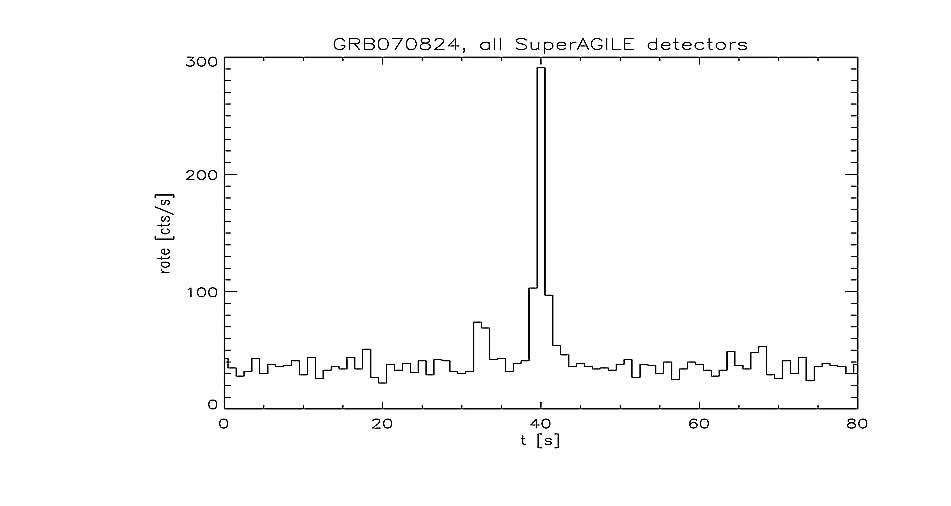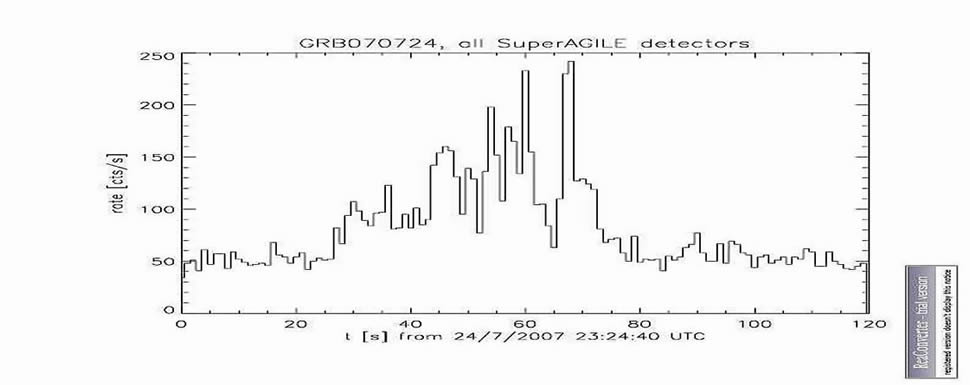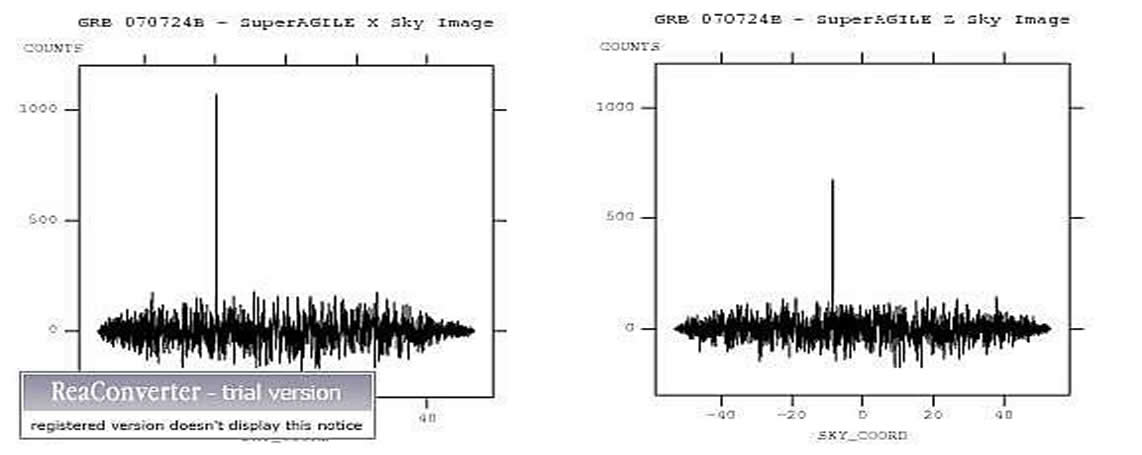The AGILE satellite, currently in its science performance verification phase, during an observation centered near the Galactic plane (l=334.44, b=10.06) that started on 2007-08-27 12:00 UT, detected significant gamma-ray emission from a source at approximately 33 degrees off-axis of the AGILE pointing direction. |
ATel #1199; A. Bulgarelli (INAF/IASF Bologna), S. Vercellone, A. Giuliani, A. Chen, S. Mereghetti, A. Pellizzoni, F. Perotti, F. Fornari, M. Fiorini, P. Caraveo, A. Zambra (INAF/IASF Milano), M. Tavani, G. Pucella, F. D'Ammando, V. Vittorini, E. Costa, M. Feroci, I. Donnarumma, L. Pacciani, E. Del Monte, F. Lazzarotto, P. Soffitta, Y. Evangelista, I. Lapshov, M. Rapisarda, A. Argan, A. Trois (INAF/IASF Roma), G. Barbiellini, F. Longo (INFN Trieste), G. Di Cocco, C. Labanti, F. Fuschino, M. Marisaldi, M. Galli, F. Gianotti, M. Trifoglio (INAF/IASF Bologna), P. Picozza, A. Morselli (INFN Roma-2), M. Prest, E. Vallazza (Universita` dell'Insubria), P. Lipari (INFN Roma-1) and P. Giommi, C. Pittori, L. A. Antonelli, D. Gasparrini, S. Cutini, F. Verrecchia (ASDC) and L. Salotti (ASI)
on 31 Aug 2007; 16:53 UT
Password Certification: Stefano Vercellone (stefano@iasf-milano.inaf.it)
Subjects: Gamma Ray, AGN, Quasars, Transients
The AGILE satellite, currently in its science performance verification phase, during an observation centered near the Galactic plane (l=334.44, b=10.06) that started on 2007-08-27 12:00 UT, detected significant gamma-ray emission from a source at approximately 33 degrees off the AGILE pointing direction. A preliminary maximum likelihood analysis of the AGILE-GRID (Gamma-Ray Imaging Detector) data obtained between 2007-08-27 14:48 UT and 2007-08-30 10:50 UT for photon energies above 100 MeV results in a detection significance of about 4 sigma. The positional error box derived from our preliminary maximum likelihood analysis (that does not, as yet, take into account possible systematic effects) results in a 95% contour level centered at the position l = 351.1, b = 39.7 with a radius of about 0.5 degrees. We note that this position is marginally consistent with the radio position of the blazar TXS 1510-089 that has been associated with the gamma-ray source 3EG J1512-0849. Considering that the in-flight calibration of the GRID is still ongoing, and despite the preliminary GRID positioning capability at substantial off-axis angles, we strongly encourage multi-frequency observations of the field of the gamma-ray source detected by AGILE. The AGILE pointing of the Galactic plane region that includes this gamma-ray source will continue until 2007-09-01 12:00 UT.





